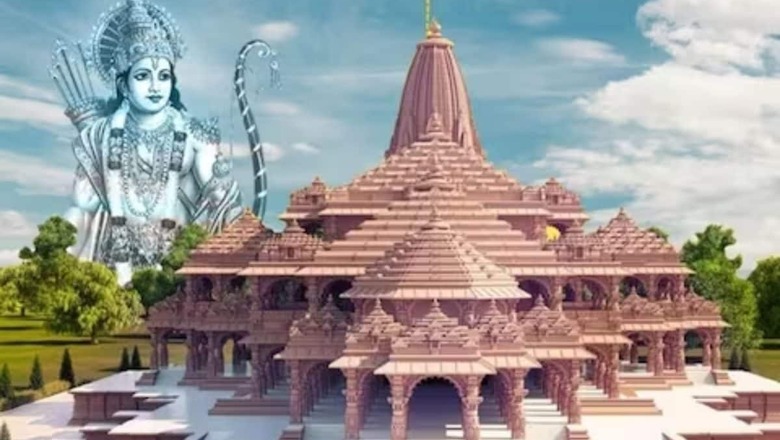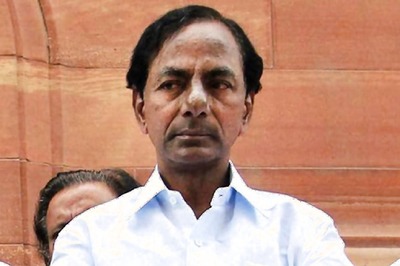
views
Ripu Jan Jiti Sujas Sur Gawat! Sita Sahit Anuj Prabhu Avat!!
Sunat Bachan Bisre Sab Dookha! Trishavant Jimi Pai Piyusha!!
(After defeating the enemy on the battlefield, Ram with Sita and Laxman is returning to Ayodhya! The Surs are singing paeans and hearing this Bharat has forgotten his agony like a thirsty person forgets his thirst on getting nectar)
Ramcharitra Manas
This article pursues to admonish the ‘argumentative Indian’ who seeks to raise a debate on the consecration of Ram Janmbhoomi Temple at Ayodhya on January 22 this year. ‘Argumentative Indian’ is the title of the collection of essays published by Nobel laureate Amartya Sen in 2005. While there are disagreements on the narrative of the popular title, this article reproves the controversy over an event being debated whether it’s Lord Ram’s homecoming or did he come thousands of years ago.
It’s said that Lord Ram never left Ayodhya. When he was externed by his father King Dasharatha for 14 years, he still lived in the heart of the people of Ayodhya and his spirit ruled the Ikshvakhu kingdom through his brother Bharat. While Ram spiritually could not be externed from Ayodhya by his father, so how could a Mughal conqueror banish him for all this while? That he always lived in the heart of followers is best symbolised by Hanuman’s espousal of Ram living in his body and tearing open his heart to show his picture there.
About a decade and a half ago, one had first-hand experience of what it means to be Ram living spiritually within every resident of Awadh. It was a drive from Delhi to Patna in times when we neither had the Agra Expressway, the Taj Expressway or the Poorvanchal Expressway. The travel thus was through the centuries-old Grand Trunk Road rechristened in its modem avatar as National Highway (NH) – 2, NH-1 being the other half of the highway from Delhi to Amritsar.
The travel was during the autumn season, after Dussehra and before Diwali. One had started from Delhi around mid-noon and it was sunset when one crossed Etawah. Crossing the Chambal district of Ajitmal as one entered the Kanpur Dehat area, one was at the periphery of the Awadh region. It was well past eight as one crossed Kanpur city through the elevated road and was firmly entrenched into the Awadh region of Lord Ram.
About 50 kilometres ahead of Kanpur, there was an accident, where a truck had tumbled down from the highway. The driver and other members of the crew were stuck inside the truck. The villagers from the nearby settlement had come out in full strength to bring the huge vehicle back on its wheels. With no modern cranes, one wondered how the villagers would execute the task.
They brought a tractor to pull the truck from one side and 20-odd people pushed it with their hands from the other side. It was a dangerous task to execute as in case if the tractor failed to pull it, the truck would have fallen on those pushing it from the other site. The spectacle started with the rickety tractor pulling on the monstrous vehicle.
As it pulled, its front wheels went up. The driver of the tractor did not lose cool. He slowed and brought the wheels down. He then told those pushing the truck from behind that the pull by the tractor and the push by the human hands had to be in sync. He then said that the cue would be the name of the prince of Ayodhya.
Silence fell as the tractor driver put the vehicle into neutral gear and pushed the accelerator pedal twice to check on the machine, which roared. He then put the machine in first gear and gave the cue, the whole environment was drowned with the cries of, ‘Bolo Siyavar Ramchandra Ki Jai, Bolo Pawanputra Hanuman Ki Jai’ (Hail Sita’s spouse Ramchandra, Hail his principal aide Hanuman).
The cries, which lasted for 30-45 seconds, were so loud that they drowned the roar of the tractor as a miracle followed. The huge truck was on its wheels. In a few more minutes, its inmates had been pulled out safely. The leader of the group of villagers examined the truck and inmates. He was satisfied that both were fit for onward journey and waved his people to return home without looking for any rewards or accolades. They followed him, chanting ‘Jai Jai Siyaram’.
The Dussehra festivities had ended and so had the Ramlilas in all parts of India, but the name of Lord Ram still remained entrenched in the environ of Awadh. We too moved on eastwards realising that Dussehra may have come and gone but Ramlilas were still alive in the hinterlands of Awadh.
As one drove through the dark, at regular intervals we could see islands of lights, wondering what was happening. A few kilometres short of Prayagraj on the bypass, we stopped at a gas station for refuelling. There we asked the attendant why there was so much light in the interiors as it wasn’t even the marriage season. “Bharat Milap ho raha hai sahib (event symbolising Bharat meeting Ram and inviting him to Ayodhya is being enacted),” he said nonchalantly.
This was another instance of the people of the region celebrating another very meaningful event from Ramayana symbolising the sacrifice of power by the regent in favour of the crowned king for the good of the people. According to Ramayana traditions, this event is believed to have taken place near Chitrakoot, which is south of Prayagraj.
Thus, spiritually, Lord Ram was never externed from the culture of larger parts of north India, in general, and Awadh, in particular. The consecration of the Ram Mandir marks the deification of the ruler of Awadh. It’s an event for which the argumentative Indians could pause their cacophonous debate.
The writer is an author and president, Centre for Reforms, Development & Justice. Views expressed in the above piece are personal and solely that of the author. They do not necessarily reflect News18’s views.


















Comments
0 comment